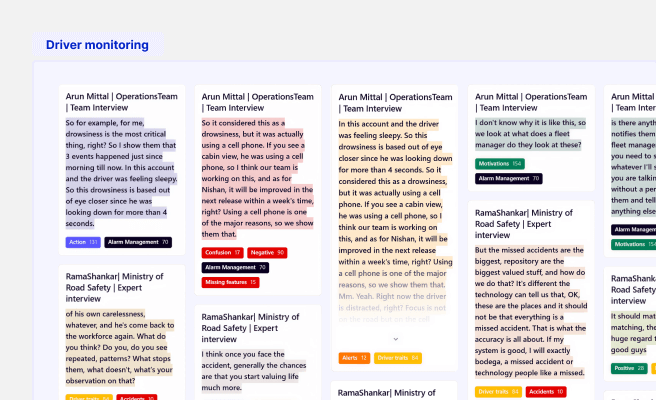Product Viability
<p>Product viability refers to the potential of a product to succeed in the market and generate sustainable revenue. This concept is crucial for companies, especially startups, as it helps determine whether a product idea is worth pursuing and investing in. By assessing product viability, businesses can avoid costly failures and allocate resources more efficiently.</p>
<p>Historically, many products have failed due to a lack of market research and validation. For example, in the tech industry, the Google Glass project was discontinued primarily because it did not meet consumer needs and expectations. Understanding product viability helps companies avoid such pitfalls by thoroughly evaluating their product ideas before launching them.</p>
<h2 id="importance">Importance of Product Viability</h2>
<p>Assessing product viability is essential for several reasons. Firstly, it ensures that there is a demand for the product. Secondly, it helps identify the target audience and their pain points. Thirdly, it aids in predicting the financial performance of the product. For visionary founders and results-driven product managers, these insights are invaluable as they help build credibility with stakeholders and drive user adoption.</p>
<h3 id="components">Components of Product Viability</h3>
<p>There are several key components to consider when evaluating product viability:</p>
<ul>
<li><b>Market Need:</b> Understanding if there is a genuine need for the product in the market.</li>
<li><b>Competitive Analysis:</b> Identifying existing competitors and their strengths and weaknesses.</li>
<li><b>Value Proposition:</b> Clearly defining what makes the product unique and valuable to customers.</li>
<li><b>Financial Projections:</b> Estimating the potential revenue, costs, and profitability.</li>
<li><b>Regulatory Compliance:</b> Ensuring the product meets all legal and industry standards.</li>
</ul>
<h3 id="benefits">Benefits of Evaluating Product Viability</h3>
<p>By thoroughly evaluating product viability, companies can reap several benefits:</p>
<ul>
<li><b>Reduced Risk:</b> Mitigates the risk of product failure by validating the idea upfront.</li>
<li><b>Resource Optimization:</b> Enables better allocation of resources to high-potential projects.</li>
<li><b>Increased Investor Confidence:</b> Demonstrates to investors that the product has been carefully assessed and has potential for success.</li>
<li><b>Improved Strategic Planning:</b> Provides a solid foundation for developing marketing and sales strategies.</li>
</ul>
<h3 id="challenges">Challenges in Assessing Product Viability</h3>
<p>Despite its importance, assessing product viability comes with certain challenges:</p>
<ul>
<li><b>Market Dynamics:</b> Rapid changes in market trends can affect the viability of a product.</li>
<li><b>Limited Data:</b> Especially for new markets, there may be a lack of reliable data to make informed decisions.</li>
<li><b>Biases:</b> Personal biases and assumptions can skew the evaluation process.</li>
</ul>
<h3 id="real-world-example">Real-World Example: Climate Tech Startup</h3>
<p>A climate tech startup focused on developing carbon capture technology faced significant challenges in establishing product viability. By conducting extensive market research and engaging with potential customers, the startup identified a strong demand for their solution among large manufacturing companies. They also analyzed competitors and found that their technology offered a unique advantage in terms of efficiency and cost. These insights helped them secure funding and streamline their product development process. More on this case study can be found <a href="https://energycentral.com/c/ec/climate-tech-startup-success" style="color: #2896FF; text-decoration: underline;">here</a>.</p>
<h2 id="how-to-assess">How to Assess Product Viability</h2>
<p>To effectively assess product viability, follow these steps:</p>
<ol>
<li><b>Conduct Market Research:</b> Gather data on market size, demand, and trends.</li>
<li><b>Validate the Idea:</b> Use surveys, focus groups, and MVPs (Minimum Viable Products) to get feedback from potential customers.</li>
<li><b>Analyze Competitors:</b> Study your competitors' products, pricing, and market positioning.</li>
<li><b>Develop Financial Projections:</b> Create detailed financial models to estimate revenues, costs, and profitability.</li>
<li><b>Test and Iterate:</b> Continuously test the product with real users and refine it based on feedback.</li>
</ol>
<h3 id="tools">Tools for Assessing Product Viability</h3>
<p>Several tools can help streamline the process of assessing product viability:</p>
<ul>
<li><b>SurveyMonkey:</b> For conducting surveys and gathering customer feedback.</li>
<li><b>Ahrefs:</b> For competitive analysis and market research.</li>
<li><b>Google Analytics:</b> For analyzing user behavior and engagement with your product.</li>
<li><b>Financial Modeling Excel Templates:</b> For developing financial projections. You can find a comprehensive guide <a href="https://www.corporatefinanceinstitute.com/resources/templates/excel-modeling/financial-model-template/" style="color: #2896FF; text-decoration: underline;">here</a>.</li>
</ul>
<h2 id="conclusion">Conclusion</h2>
<p>Understanding and evaluating product viability is crucial for ensuring the success of any new product. By conducting thorough market research, validating the product idea, analyzing competitors, and developing detailed financial projections, companies can significantly increase their chances of success. For visionary founders and results-driven product managers, a focus on product viability can lead to more informed decision-making and better outcomes. To learn more about improving your product viability assessment strategies, visit our detailed guide <a href="https://www.productplan.com/glossary/product-viability/" style="color: #2896FF; text-decoration: underline;">here</a>.</p> <p>If you’re looking for inspiration to elevate customer and user experience for enterprise-grade products, View our work with the Ministry of Health of Saudi Arabia for curating the UX of an <a href="https://www.whatifdesign.co/work/enterprise-software-for-hospitals" style="color:#2896FF; text-decoration:underline;">Asset Management Tracking Platform</a></p>
<p>Ready to get started? <a href="https://cal.com/akhilak/what-if-design?duration=30" style="color:#2896FF; text-decoration:underline;">Book a 1:1 consultation call</a> with us today.</p>

Let's scale your impact with great design.
Free consultation, no sales pitch
Thank you! Your submission has been received!
Oops! Something went wrong while submitting the form.
Let’s talk
Nothing great is built alone.
Let’s connect about your vision, our work and how we can collaborate.
Get in touch

